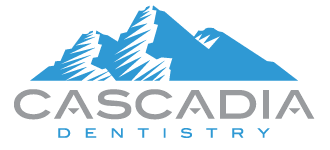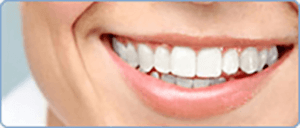
You may have heard of Invisalign, or “clear braces” orthodontic treatment. Invisalign is available to our patients at Cascadia Dentistry to accomplish a variety of dental goals such as straightening teeth, closing spaces and correcting poor occlusion (your “bite”). For patients that do not want to pursue more traditional braces but could still benefit from orthodontics, Invisalign is an excellent treatment option. If you’ve wondered how the Invisalign process works, let me offer a quick rundown as well as some tried-and-true tips and tricks for success.
The first step with Invisalign is to determine if you are a good candidate. The majority of patients with minor to moderate crowding and spacing concerns tend to be good candidates for Invisalign. Patients that have had braces before but are finding that their teeth have moved over time also tend to be good candidates. On the flip side, for patients with uncontrolled periodontal disease or significant crowding and spacing concerns, Invisalign may not be the right treatment option. Our Invisalign consultations are free to determine whether Invisalign may be a good option for you.
Invisalign treatment consists of wearing thin, clear plastic “trays” over your upper and lower teeth that click into place by lining up to small brackets that adhere on to several of your top and bottom teeth. You can remove the trays, but the brackets stay on your teeth until treatment is complete. You wear each set of trays for one week before switching to the next set. The optimal amount of time to keep your trays in each day is roughly 22 hours – which means that unless you’re eating or drinking, you really have to commit to wearing your trays all the time. As your teeth experience significant movement during Invisalign treatment, failure to wear your trays as often as required will impact the trajectory of movement and may require additional impressions to get back on track, extending the entire process. Once your treatment is complete, patients will need to wear retainers daily for six months. After six months, patients must wear retainers nightly to ensure the achieved movement of your teeth is maintained. If wearing retainers nightly “forever” seems daunting, don’t despair, there are other alternatives to consider that may be a better fit.
The most common feedback I hear from patients is that usually there is an initial adjustment period over the first week or so of wearing trays. During the adjustment period, you may find you are still getting used to speaking comfortably with your trays in, establishing good habits for wearing your trays except while eating/drinking, and really ramping up your overall oral hygiene to ensure your teeth and your trays stay as clean as possible. You will also find you are adjusting to the feeling of tightness while wearing trays as well as a heightened awareness of your teeth gradually shifting. I find patients generally report that by the 3rd day after changing into a new set of trays, tightness and soreness does subside. I recommend that patients be prepared for casual snacking to become more challenging and that they carry a travel toothbrush. Water is fine to consume with your trays in but you should remove your trays for any other food or drink to reduce your risk for cavities.
After you get started with your Invisalign treatment, periodic appointments are required every three to four weeks to monitor your progress and make adjustments as necessary. We distribute 3-4 sets of trays that you are responsible for switching weekly between these visits. Most patients indicate that once the process is underway, they become used to wearing their trays frequently and generally don’t have many challenges seeing their treatment through successfully.
If Invisalign is something you’ve considered or you are interested in learning more about it, please give us a call to schedule a consultation. We would love to show you the ways in which this treatment may benefit you and your smile!



 With the end of the year rapidly approaching, it’s a good time to discuss dental insurance as you may be considering enrolling in a new plan or looking to maximize your dental benefits.
With the end of the year rapidly approaching, it’s a good time to discuss dental insurance as you may be considering enrolling in a new plan or looking to maximize your dental benefits.